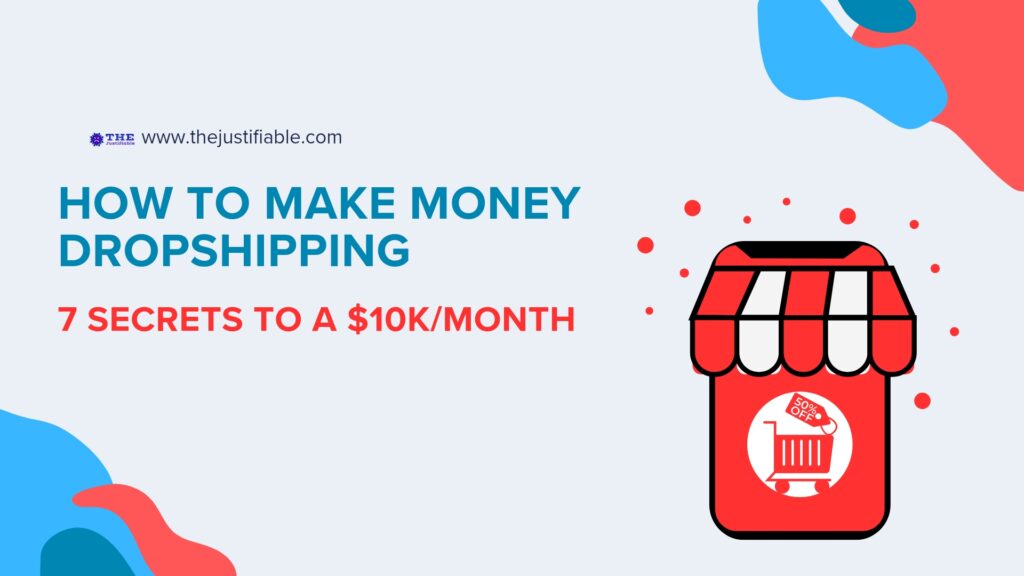Table of Contents
What if one simple shift in your marketing mindset could change the whole direction of your store?
A question that pokes. It lingers. Kind of sticks. Because every eCommerce owner feels that hidden tug.
That suspicion that growth isn’t about shouting louder, but measuring sharper. You know, the quiet kind of strategy that keeps working when you’re asleep.
Performance marketing sits there steady, calm built on numbers, not noise. It’s the opposite of guessing. It’s the art of turning clicks into actions, and actions into revenue that actually stays.
Some days it feels like a puzzle. Some days like a smooth ride. But it always comes back to one truth: every move count. And every move can be improved.
So, in a world full of ads screaming for attention, performance marketing whispers something else. Results. Real ones. That’s the story we’re walking into.
Understanding Performance Marketing in eCommerce
Performance marketing isn’t fluffy. Not decorative. It’s direct. Almost blunt. You pay when customers do something. Not when they simply stare at an ad and walk away like nothing happened.
Think of it like running a tiny experiment every single day. A click here. A scroll there. A cart half-filled. A purchase completed. And all those small signals join together, forming a pattern. A rhythm. Your brand’s own heartbeat.
It works because eCommerce runs on behavior. People browse late at night. Compare in the morning. Buy when their mood warms up. Performance campaigns track these tiny shifts.
They show you what works without you pretending to know. Suddenly your marketing doesn’t feel like throwing darts in a dark room. It feels more like adjusting a machine that reacts instantly.
The beauty? It adapts. Fast.
Key Pillars of ROI-Driven Performance Marketing
Performance marketing stands on a few pillars. Strong, simple ones. Good pillars don’t bend easily.
1. Clear Goals and KPIs
You can’t chase vapor. Goals matter. But not those vague “increase sales someday maybe hopefully” kind of goals. Real ones. Predictable. Solid. ROAS. CPA. Conversion rate. Average order value. Pick your compass and follow it.
When you measure the right thing, campaigns suddenly make sense. Otherwise they float around like confused balloons.
2. High-Intent Traffic Sources
Intent is the secret spice. A quiet force. Some channels come packed with people already wanting something. Search. Shopping ads. Retargeting. These users don’t wander aimlessly, they look with purpose. Almost ready.
Social ads? They’re dreamers. Browsers. But dreamers can become buyers with the right story.
3. Accurate Tracking and Measurement
Tracking is like turning on the lights in a messy attic. Suddenly everything becomes visible. And maybe a little scary. But necessary.
Misplaced pixels, broken conversions, untidy UTMs these ruin ROI silently. Clean tracking saves your budget from drifting away.
4. Ongoing Testing and Optimization
Test. Break. Fix. Repeat. That’s performance marketing. Small tweaks create big echoes. A headline shorter. Button brighter. Offer tighter. Some changes flop. Others shine. It’s fine. That’s the flow.
5. Creative Messaging Matched to Buyer Intent
The right message feels like a soft tap on the shoulder. “Hey, this is what you were looking for.”
Not loud. Not pushy. Relevant. Honest. Helpful. That’s when the shopper stops scrolling and thinks, “Hmm… maybe yes.”
Paid Search: The Most Direct Path to Buyers
Search users come with purpose. They type with intention. Almost like they already know the ending of the story, they just need the right store to make it happen.
This is why search ads work. They appear at the perfect moment. A second before the decision. You just need to show up with clarity.
To make it strong, break your keywords in layers. High intent at the center. Long-tail phrases circling around. Negative keywords guarding the edges. And then watch how each query holds a small clue about the shopper’s mindset.
The trick is simple. Be the answer.
Google Shopping: Turning Browsers Into Buyers
Shopping ads are like tiny showcases lined up neatly on Google. A little window. A picture. A price. A promise. Customers love it because it feels honest. No hidden surprises.
But the product feed carries the real magic.
Titles written like a gentle whisper. Images sharp. Categories precise. Stock synced. Pricing updated before anyone complains. You do this right and suddenly clicks become warmer, friendlier.
Google Shopping doesn’t need fancy words. It needs accuracy. And a bit of soul.
Social Ads: Creating Desire and Attraction
Social platforms run on moods. People scroll. They drift. They tap. They share. They jump between laughter, curiosity, boredom, hope—with the same thumb that might soon buy from you.
Performance marketing on social is half science, half emotion. Visuals speak first. Stories next. Offers last. And together they tempt the user into imagining life with your product.
Show humans. Show moments. Show the “why” behind the product. Even a small, imperfect story beats a polished ad that says nothing.
Retargeting on social fills the gaps. It’s like saying, “Hey, remember us? Still here. Still worth it.”
Retargeting: Recovering Lost Sales
People abandon carts like it’s a hobby. They get distracted. They doubt. They procrastinate. Retargeting doesn’t chase them aggressively. It gently circles back.
A soft reminder. A simple nudge. A little reassurance. That’s all.
Segmenting helps you speak differently to each group. Visitors who only browsed. Visitors who added items. Visitors who reached checkout and then disappeared like a ghost in the night.
Each one needs a unique whisper.
Retargeting is polite persuasion. Done right, it saves revenue you thought was gone forever.
Landing Pages That Convert
A landing page carries the final weight of every campaign. If it stumbles, everything collapses. So, it must stay clean. Light. Focused.
One message. One strong benefit. One path forward. That’s enough.
Fast loading. Trust signals popping gently. A layout that feels breathable. Stories woven into the content. Subtle emotions. Seeing a real person behind the brand changes how shoppers feel.
And for products with flexible pricing or custom quotes, features like WooCommerce Call for Price help keep the conversation open without scaring away the buyer.
Analytics: Reading the Signals That Drive ROI
Analytics is quiet. But powerful. It tells you things people won’t say out loud. It reveals hesitation. Interest. Friction. Desire.
Bounce rates. Scroll depth. Path analysis. Time on page. Device behavior. Every number speaks.
Some insights hurt. Some spark excitement. But all of them guide decisions. And decisions guide revenue. Without analytics, you’re just guessing. Like driving blindfolded and hoping to reach the right exit.
Performance marketing thrives only when the numbers breathe transparently.
Growth Through Optimization and Experimentation
Growth isn’t a big explosion. It’s a series of tiny victories. A click. A conversion. A lower CPA. A higher ROAS. Small improvements stitched together.
Every test adds another thread.
Experiment with images. Try messy ones. Try aesthetic ones. Test headlines written in a rush. Test ones crafted beautifully. You never know which imperfection converts better.
Play with funnels. With offers. With bundles. Some ideas fall flat. Others soar quietly. The kind of wins that stay invisible until they accumulate into something huge.
Scaling Performance Campaigns Without Breaking ROI
Scaling is tricky. Tempting. Sometimes dangerous. Many brands rush it. Push budgets too fast. Then everything cracks. ROAS drops. CPA spikes. Panic enters the room.
Scaling should feel slow. Almost boring.
Increase budgets gently. Add audiences softly. Test broader geos. Use automation when the numbers stay stable. Keep watching the data like it’s a newborn child.
When scaling is done right, growth feels natural, not forced.
Affiliate and Influencer Performance Channels
Affiliates love performance deals because they win when you win. Clean. Fair. No fluff. They drive targeted traffic if chosen wisely.
Influencers? They bring emotion. Trust. A face that feels familiar to the audience. But performance-style influencer campaigns are different. You track everything. Links. Codes. Sales. No mystery.
And customers trust people more than plain ads. Always have. Always will.
Building a Future-Ready Performance Engine
A future-ready engine doesn’t fear change. It grows with it. Algorithms shift. User behavior evolves. Platforms rise and fall. But your strategy stays adaptable.
This engine tracks everything. Tests often. Learns fast. Creates fresh creatives. Keeps the checkout smooth. Uses automation wisely. Avoids fatigue.
It’s like a living system. Always moving.
And when this engine runs well, your store no longer depends on luck. It depends on structure. A reliable one.
Conclusion
Performance marketing isn’t loud. It works in the shadows. In the numbers. In the slow and steady improvements that stack into real revenue. Every click tracked. Every audience refined.
Every landing page tuned. Together they form a powerful cycle that pushes your store forward.
You don’t need magic. Just clarity. And the willingness to test things until they shine.
This is how eCommerce grows today, one measurable step at a time. A path built on results, not noise. A journey driven by ROI, not guesswork. Do it right, and your store begins to rise with a confidence you can feel in every sale.






